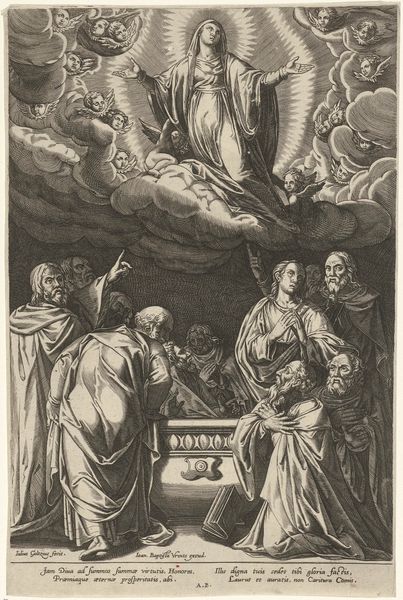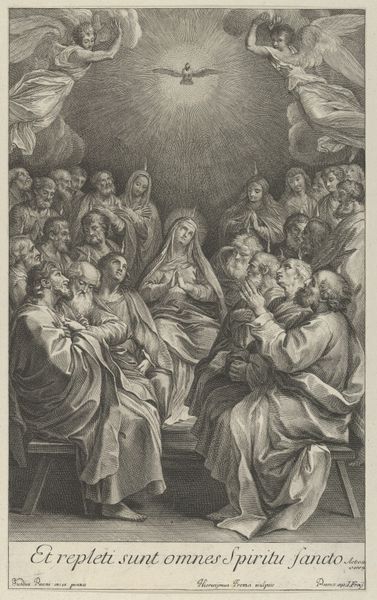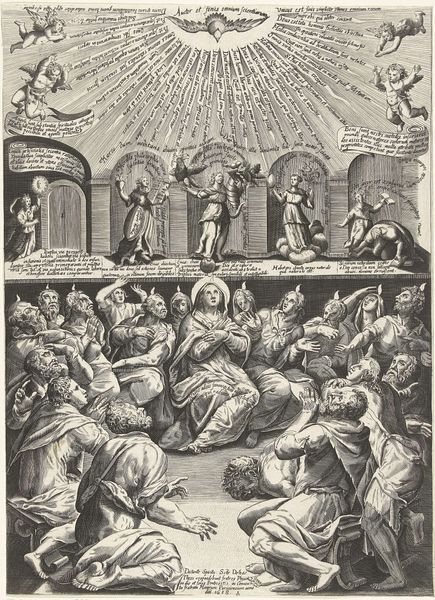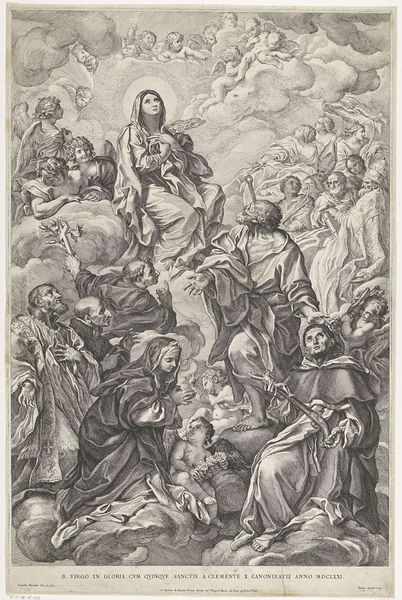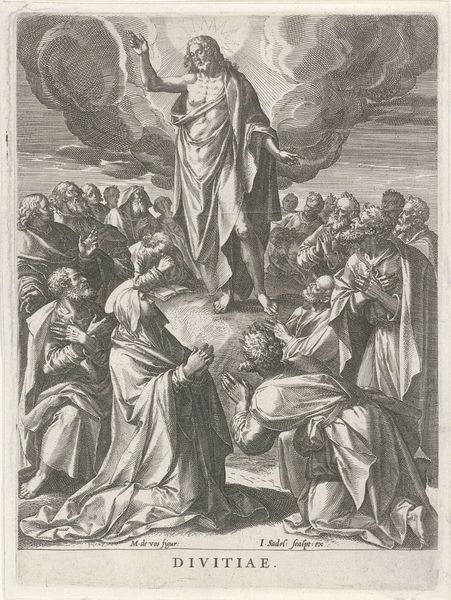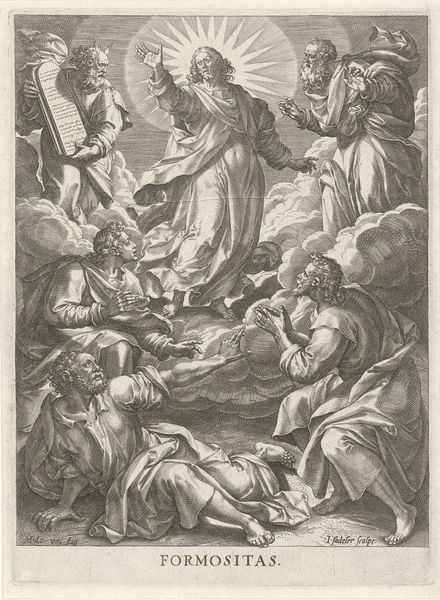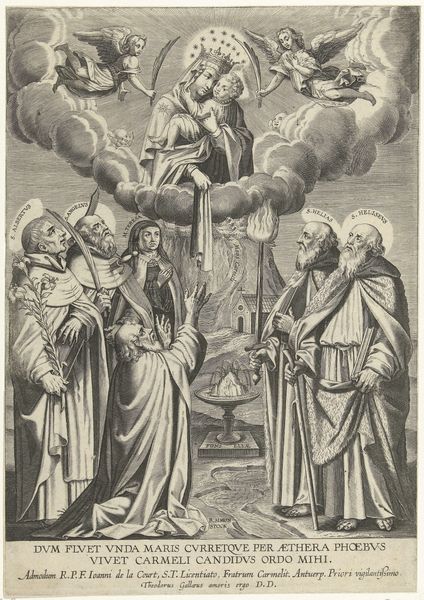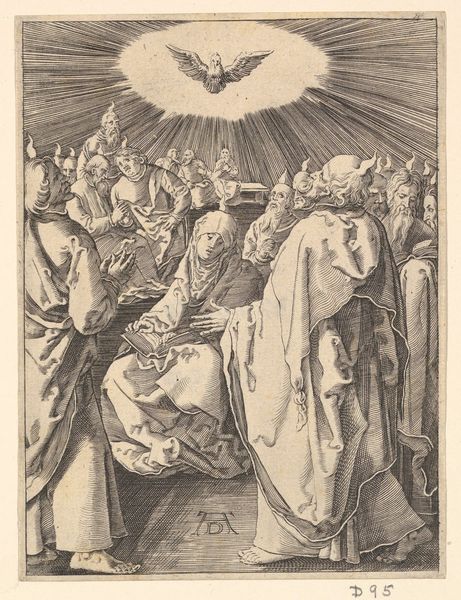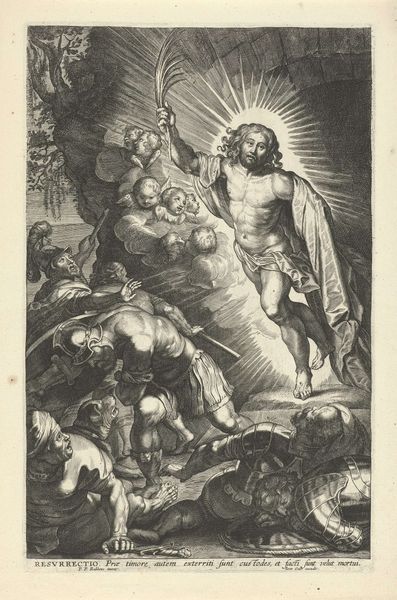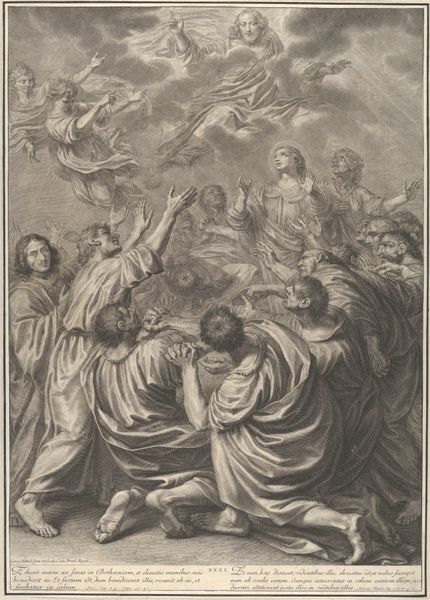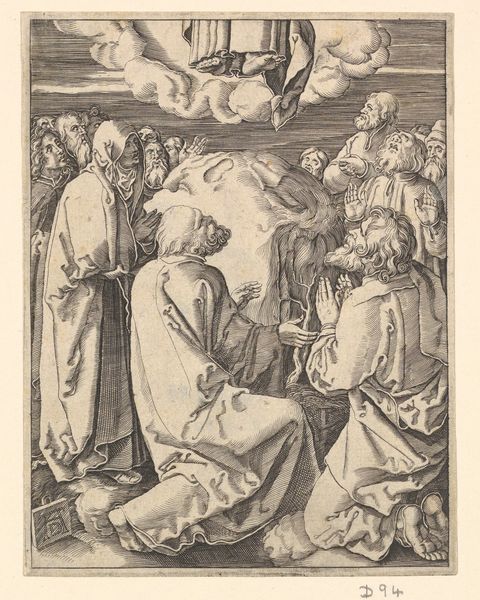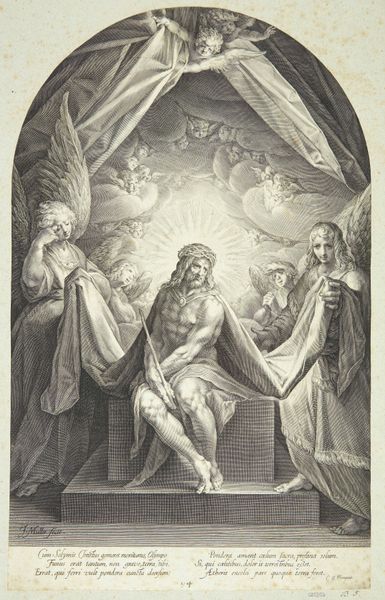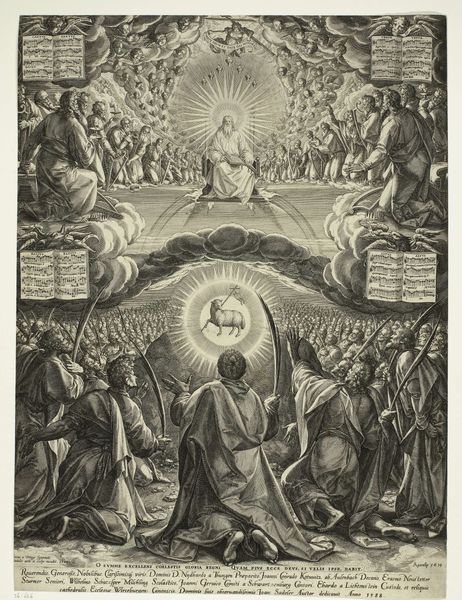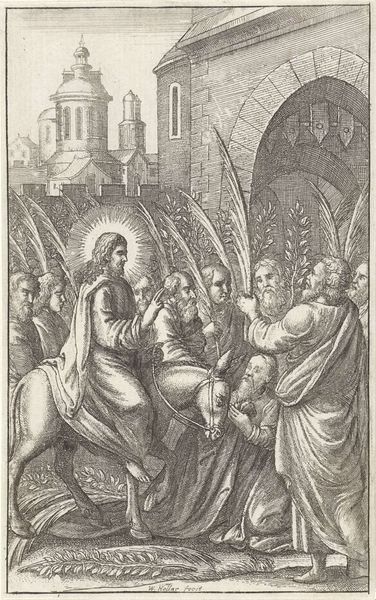
ink, engraving
#
baroque
#
pen drawing
#
pen illustration
#
pen sketch
#
figuration
#
ink
#
ink drawing experimentation
#
pen-ink sketch
#
pen work
#
history-painting
#
engraving
Dimensions: height 280 mm, width 177 mm
Copyright: Rijks Museum: Open Domain
Curator: This is “The Descent of the Holy Spirit (Pentecost),” an engraving that art historians attribute to François Stuerhelt. Though the exact date remains unclear, experts believe it was created sometime between 1600 and 1652. Editor: Whew, that’s dramatic! I mean, look at all the tension. It feels almost theatrical. The light practically vibrates, doesn't it? And is it just me, or are some of them…frightened? Curator: Well, the subject matter itself is inherently dramatic, depicting the moment when the Holy Spirit descended upon the Apostles. That powerful divine moment is usually rendered with visible expressions of awe and occasionally fear, if we look at depictions of the same subject in contemporaneous baroque painting from the Italian Peninsula or the Low Countries. The architecture behind the apostles suggests a formal, structured setting, like a church. Editor: I notice how the lines become so frenetic near the dove at the top, like radiating energy or…divine static! And those little flames above everyone's heads! A touch cartoonish, maybe? But charming! It gives this intense moment a playful, almost celebratory vibe too. Curator: Yes, those flames symbolize the tongues of fire described in the Bible, signifying the gift of languages that the Apostles received, enabling them to spread the Gospel. It became a common symbolic language within visual depictions of this historical moment that followed, an important motif. Editor: Interesting how they’re all gazing upward. Like waiting for the next act, maybe? It gives it such a communal, participatory energy, this feeling of anticipation that ripples right through. What’s especially intriguing is that while the pen work captures great tonal range and movement, it all seems meticulously placed – what that says about Stuerhelt’s interpretation here, I am curious about. Curator: Given that this print would have been reproduced, perhaps its original audience sought guidance and reassurance during a time marked by conflict and uncertainty related to the Reformation, and this artwork served as a reminder of the unifying power of faith, communicated using easily reproducible and accessible graphic technologies. Editor: I'm definitely seeing a new side to this piece. Originally I noticed its dynamism and tension, but thinking about it as an artifact circulating amid complex social changes adds a lot of depth. Thanks! Curator: And thank you— your reflections provided such valuable aesthetic observations!
Comments
No comments
Be the first to comment and join the conversation on the ultimate creative platform.
